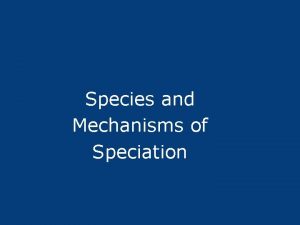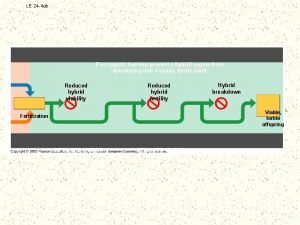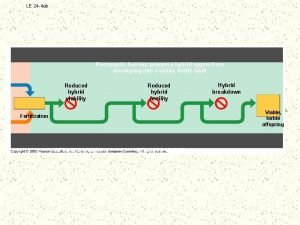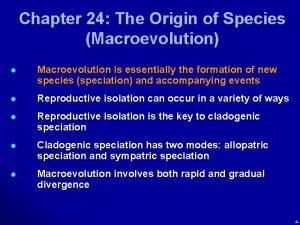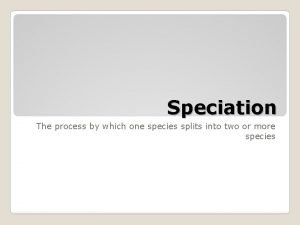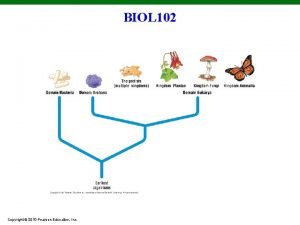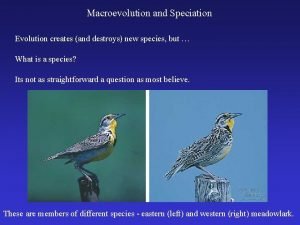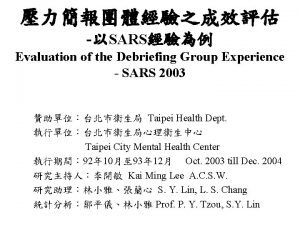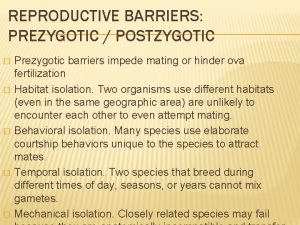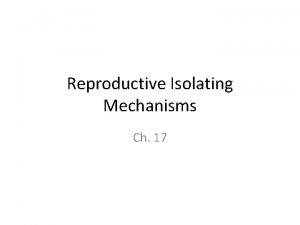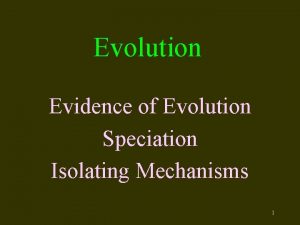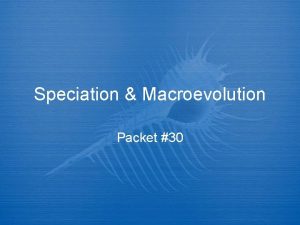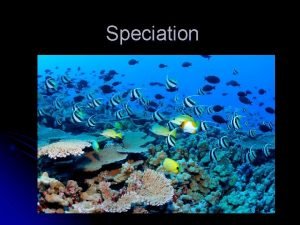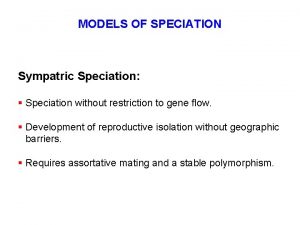Speciation cont Postzygotic isolating mechanisms Despite prezygotic mechs









- Slides: 9

Speciation cont.

Postzygotic isolating mechanisms Despite pre-zygotic mech’s, sperm may still fertilise an egg and create a hybrid. Hybrid inviability: - The zygote, embryo or offspring is inviable (unable to survive/develop normally) so dies early in development. - Eg – Hybrid frogs often don’t survive in the tadpole stage for more than a day.

Postzygotic isolating mechanisms Hybrid sterility: - Hybrid reaches maturity but can’t breed as it is sterile. - Eg – A mule (male donkey – 2 n = 62 and female horse – 2 n = 64). Mules have 63 chromosomes so can’t pair during meiosis. Hybrid breakdown: - Occurs when hybrid reaches maturity and is able to breed but the next or subsequent generations are infertile or have reduced reproductive capacity. - Eg – first gen of hybrid cotton are fertile but the next gen’s have reduced fertility.

Postzygotic isolating mechanisms Isolating mechanisms may be individually insufficient to maintain genetic isolation, however in nature several mech’s work together. Sometimes iso mechs are weak: Eg – native grey duck and mallards hybridise freely. The degree of genetic isolation that a mech provides may reflect the evolutionary stage from a common ancestor.

Evolution of postzygotic iso mechs during a period of allopatry Allopatric populations are unlikely to have the same environment, so selection can take a different form and two pop’s will diverge genetically. The more different the conditions, the faster the two will diverge. Depending on how different they become, they could be subspecies or full new species. Genetic differences that evolve will be a result of mutation, and the subsequent creation of new alleles. However, this is only proven when the species become sympatric again and they can interbreed – if they remain allopatric, we may never know them as separate species. Eg – morepork and boo-brook (Aus) are so similar and considered subspecies, however we can’t interbreed them so the matter is unresolved.

Evol of prezygotic mechs during subsequent sympatry – 3 things 1. Some interbreeding – hybrids are less fertile so are less fit than parents = disadvantageous. Selection would favour those with different mating signals, breeding times etc so they mate with their own kind.

Evol of prezygotic mechs during subsequent sympatry – 3 things 1. Some interbreeding – hybrids are less fertile so are less fit than parents = disadvantageous. Selection would favour those with different mating signals, breeding times etc so they mate with their own kind. *The evolution of postzygtoic isolating mechanisms thus provides the main impetus for the evolution of prezygotic isolating mechanisms*.

Evol of prezygotic mechs during subsequent sympatry – 3 things 1. Some interbreeding – hybrids are less fertile so are less fit than parents = disadvantageous. Selection would favour those with different mating signals, breeding times etc so they mate with their own kind. *The evolution of postzygtoic isolating mechanisms thus provides the main impetus for the evolution of prezygotic isolating mechanisms*. It is also likely that there is overlap in niches = competition for resources. Strong selection pressure in favouring different food etc. This may result in a burst of divergence, with new species forming.

Evol of prezygotic mechs during subsequent sympatry – 3 things 2. Populations don’t hybridise at all because during allopatry, prezygotic mechs evolve. Two species may be closely similar in their niches = competition = rapid rise in divergence until competition is minimised. 3. Hybridise freely – merging to reform the original species. Can be an indication that the species are of recent origin with imperfectly evolved isolating mechanisms.
